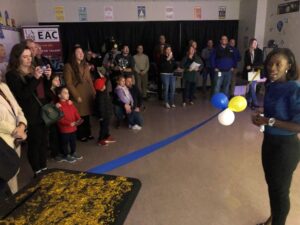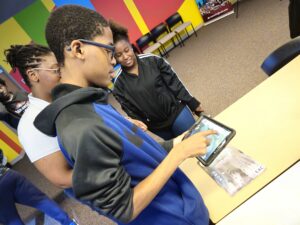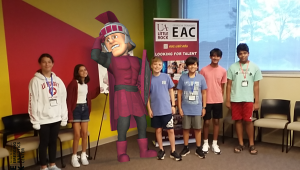Original Article can be found here: https://www.arkansasonline.com/news/2023/feb/21/an-app-for-that/
The body of Edward Johnson, lying in a pool of blood, has been discovered in the bathroom of his apartment during a Super Bowl party.
Johnson’s friend, Samuel Marcelle, calls 911.
“Oh my God, he’s dead! There’s blood everywhere and he’s not moving! Please, someone help!”
Officer Justin Williams has responded to the scene at 124 Rodeo Drive, and, with the help of a new web-based app, you can come along for the investigation to interview witnesses, collect evidence and determine if indeed a crime has been committed.
This is the scenario that unfolds in CrimeScene 360, a virtual reality mystery app created from a collaboration between the School of Criminal Justice and Criminology and the George W. Donaghey Emerging Analytics Center at the University of Arkansas at Little Rock.
Dive into the investigation for yourself at CrimeScene360.
Members of the team behind the University of Arkansas at Little Rock’s CrimeScene 360 app include Tom Coffin (from left) operations manager of the Emerging Analytics Center; David Tyler, assistant professor in the School of Criminal Justice and Criminology; Dana Fachner Tyler, criminal justice graduate student and Jason Zak, lead artist of the Emerging Analytics Center. (Arkansas Democrat-Gazette/Sean Clancy)
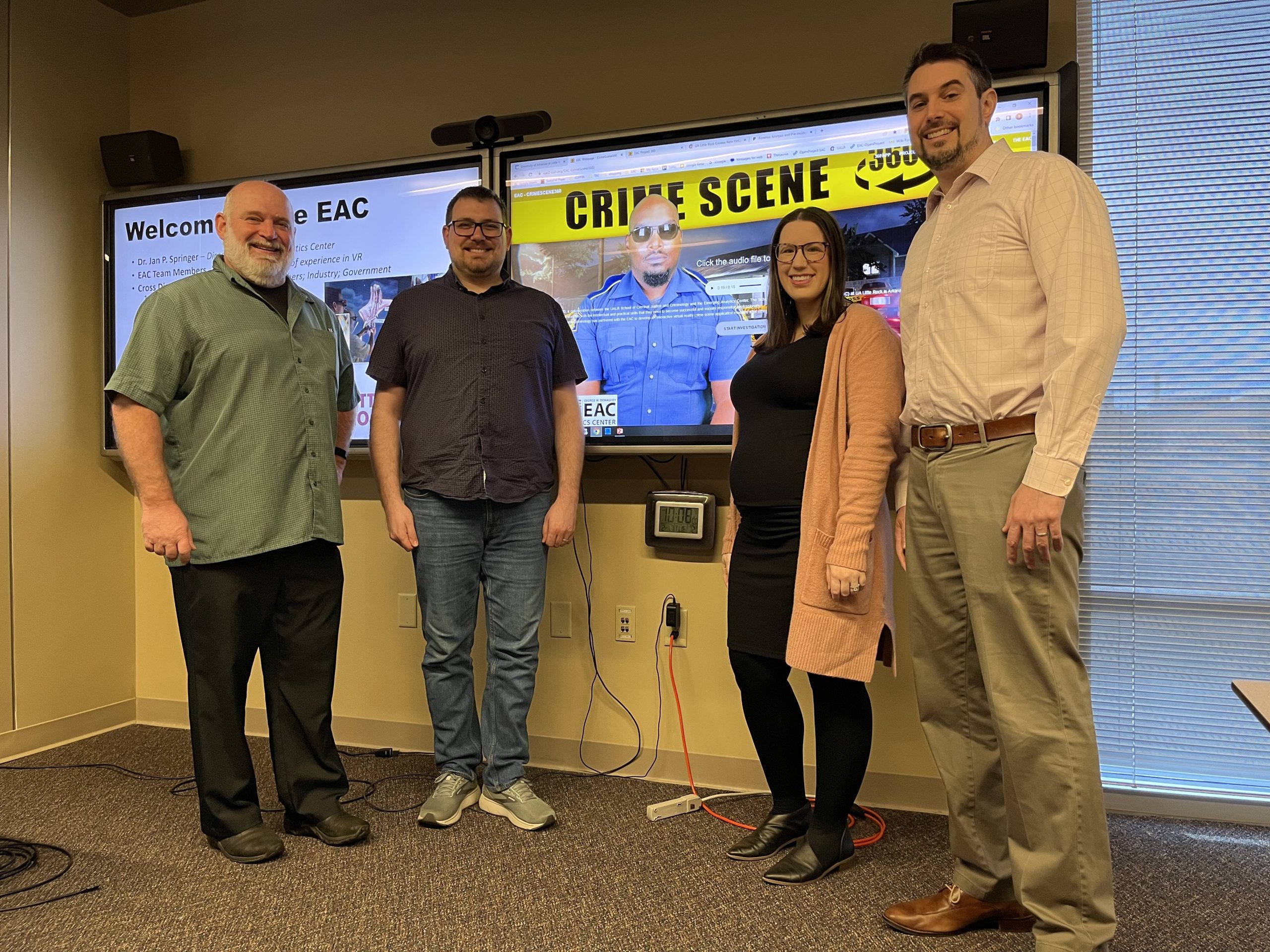
It’s a cloudy Tuesday morning earlier this month and a few of the people behind the app have gathered in a room at the analytics center in the Engineering and Information Technology building at UALR. On a large screen on the wall is the first page of the app that shows officer Williams in front of a yellow banner resembling police tape and “Crime Scene 360” written in black.
The app started out as a recruitment tool for an October job fair at UALR’s Donaghey Student Center, says Dana Fachner Tyler, a criminal justice graduate student at UALR. She asked her husband, David Tyler, an assistant professor of criminal justice at the school, to come up with a crime scene story line. He reached out to staff at the analytics center in May about using virtual reality to tell the story and things took off from there.
“It started to spiral,” Tyler says. “In our first meeting, we were talking through all the different options and things that they are working on here. We started seeing applications well beyond what we had initially been looking for.”
The app made its debut at the October job fair and has been used at other recruitment events, Fachner Tyler says, and now both she and her husband are using it in the classroom.
“I’ve made a number of assignments that use aspects of it in both my Introduction to Policing and Introduction to the Criminal Justice System courses,” Tyler says.
“In my classes, students are walking through CrimeScene 360 and answering a list of questions at the end,” Fachner Tyler says. “They are reflecting on what the day-to-day life of a police officer might be like, how common this [scenario] might be, whether this fits with the narrative of what police work is. We’re trying to make it a really holistic learning tool in addition to being really fun and flashy.”
The app gives the user a chance to see what it’s like to investigate a crime scene from beginning to end.
“One of the things we really focused on was trying to walk the line of realism as much as we could and give students what a typical 911 call might look like,” Tyler says. Don’t worry, even though this is an investigation of a dead body, the app is firmly rated PG.
The scenario played out comes from notes from a study made by Tyler and informal conversations with former law enforcement officers. The app begins in the squad car of officer Williams as the user hears the 911 call and sees a screen with details about the report.
After exiting the car, the app takes the user into the apartment to inspect the scene and interview people there — two of whom are played by the Tylers; the others are played by criminal justice school director Tusty ten Bensel and doctoral student Darlynton Adegor. We see Johnson’s bedroom, messages on his laptop, his prescription for painkillers, what may have been his cup of bourbon and Coke as well as the chalk outline on the bloody floor of the bathroom where his body was found.
Along the way there are clues as well as a few red herrings for the user to sort through.
At the end, users are asked to fill out a report and decide whether or not poor Edward Johnson was the victim of foul play, an accident or suicide. (A “solution page” that would let users find out just how Johnson met his end is in the works, Tyler says.)
Officer Williams is played by the real-life Justin Williams, a graduate student and student development specialist in the criminal justice school at UALR, who just happens to be a former Arkansas State trooper.
“It’s awesome,” he says of the app during an interview last week. “The call log, what the [interior of the car] looks like, it gives you the perspective of what it’s like to respond to a call.”
Witnesses are interviewed in CrimeScene 360, a web-based app created through a collaboration between the School of Criminal Justice and Criminology and the Emerging Analytics Center at the University of Arkansas at Little Rock.
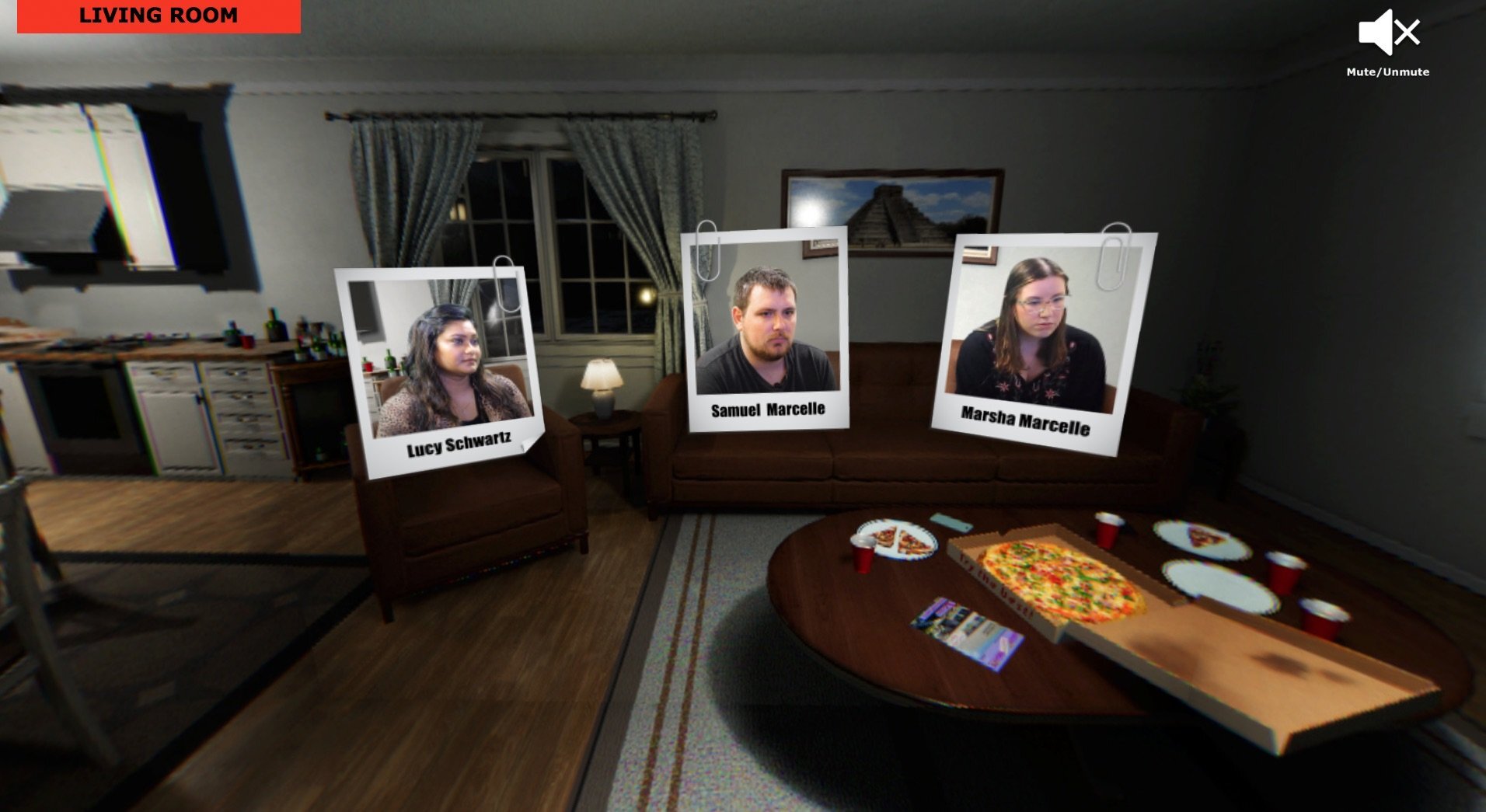
The analytics center “focuses on research and development in immersive visualization, augmented/virtual/mixed realities, and interactive technologies in general,” according to the school’s website. Tom Coffin is the center’s operations manager.
“A lot of our focus is doing these cross-disciplinary projects,” he says. “We can do the coding, we can do the artwork but we are not content specialists. We collaborate with researchers on campus, or in industry and government, to help them develop these applications … the whole point is to teach students how to create these assets.”
The plan, Coffin says, is to create a virtual experience with interesting and appealing interaction.
“The artwork is super important, and the look and feel of the application is our primary concern when we’re developing it.”
Speaking of art, Jason Zak is the analytics center’s lead artist.
“The goal was to put the user in the shoes of an actual officer,” he says. “We wanted to make sure that when we were designing this that we really got that part.”
Creating the app brought in students whose interests ranged from recording audio to coding and filming.
“I remember how diverse the student’s abilities were,” Fachner Tyler says. “They had so many skills that were utilized in all these mediums.”
The app has a lot of moving parts, Coffin says, like the witness interviews that use YouTube videos created by recording the actors in front of a green screen and rendering the background later.
“We’re incorporating a lot of web techniques and fusing them in more traditional virtual reality app development.”
Academics like the Tylers and others can collect data from users of the app to see how it is working.
“You can track what the user is looking at,” Coffin says, adding that the information could be used for the classroom and for training.
Tyler says there are other ideas on how to use more virtual reality-style apps for law enforcement.
“One of the projects we are talking about developing would be one with an active shooter situation for officers. Putting them in a virtual environment, you’d be able to track where they are looking, what information they are collecting and what decisions they are making.”
In the meantime, he adds, apps like CrimeScene 360 are becoming de rigueur in the classroom.
“I’m just starting my career and I fully expect to be using these type of tools. It’s really exciting to get in and start working on it now.”
CORRECTION: Jason Zak is the lead artist of the George W. Donaghey Emerging Analytics Center at the University of Arkansas at Little Rock. His last name was misspelled in an earlier version of this article.


